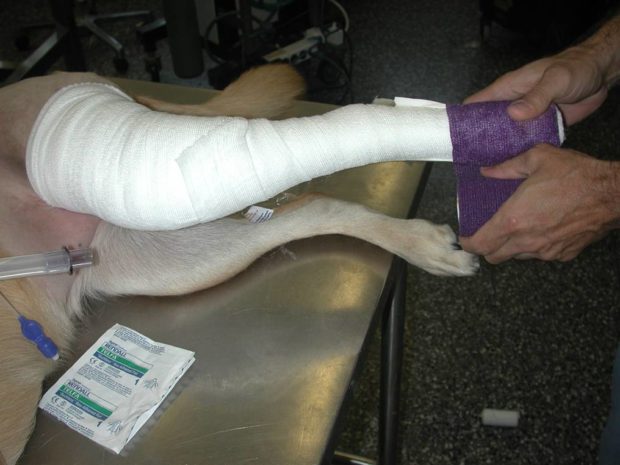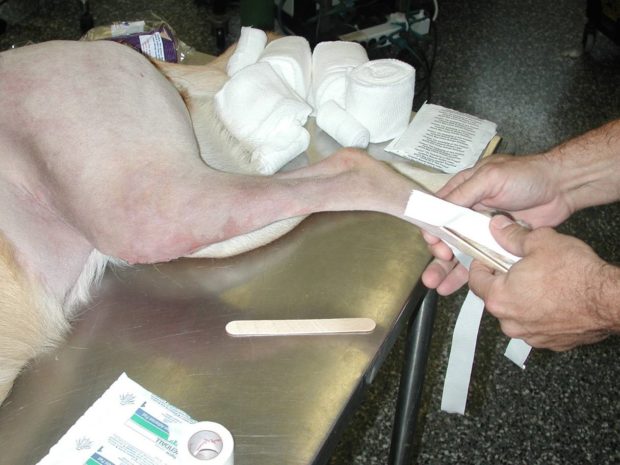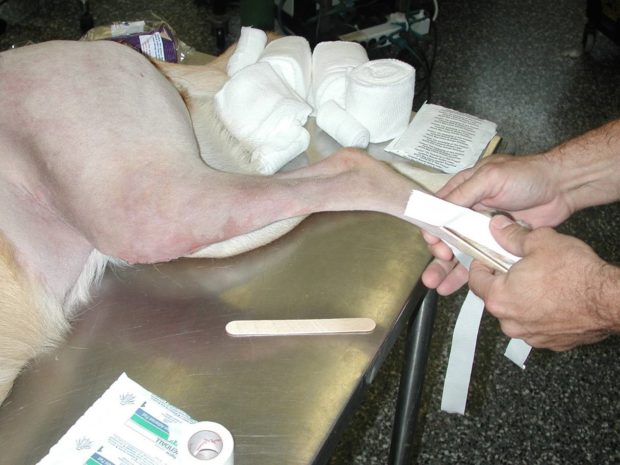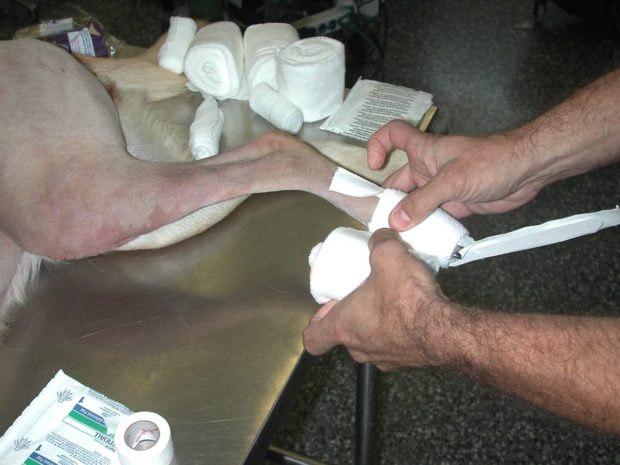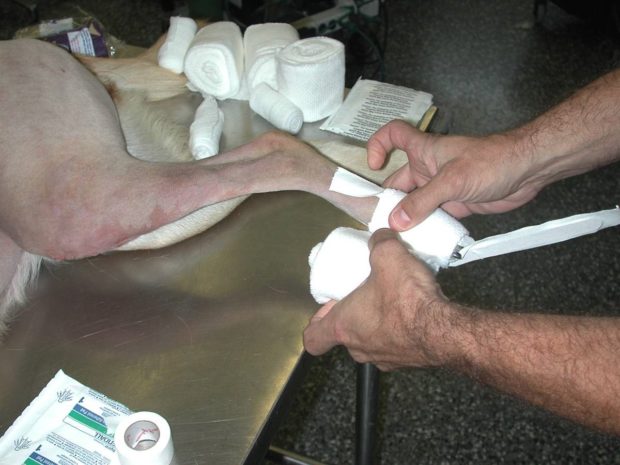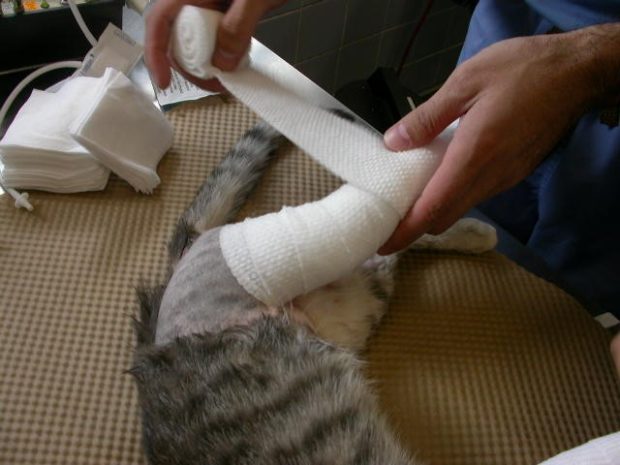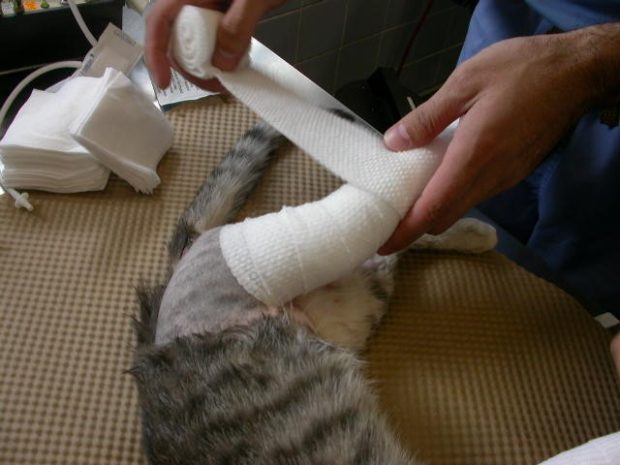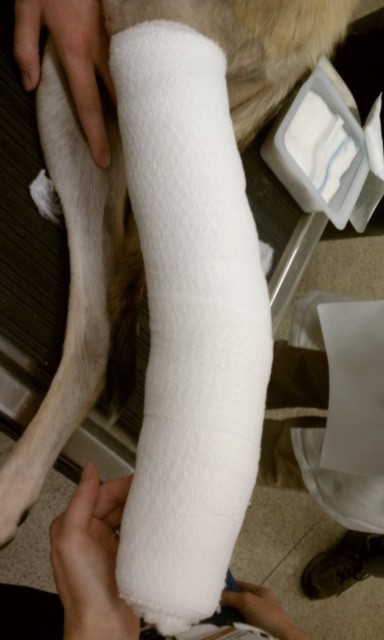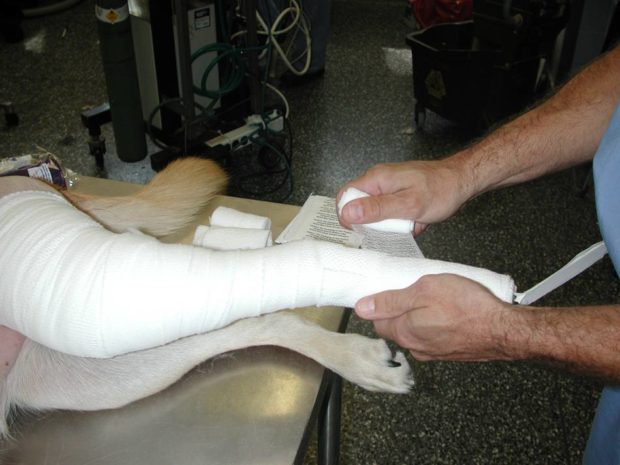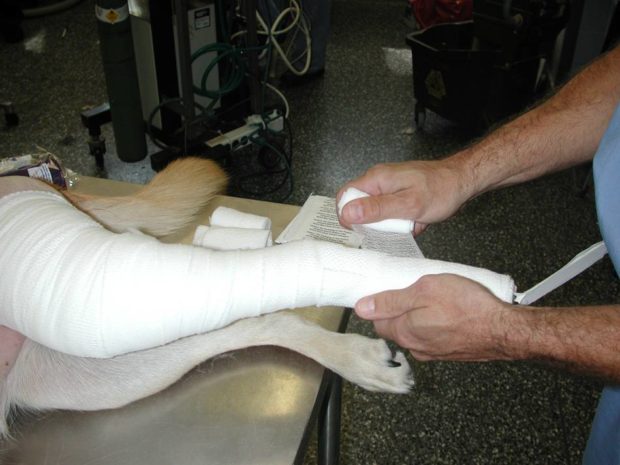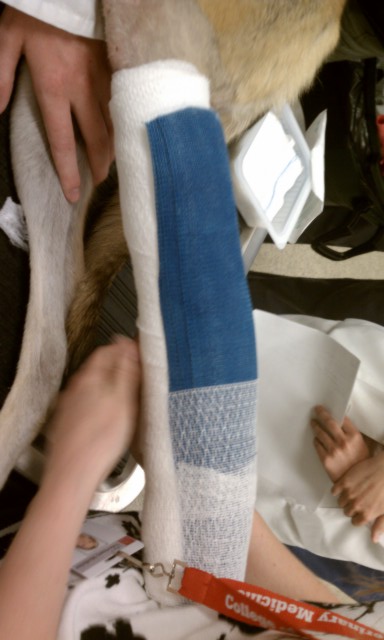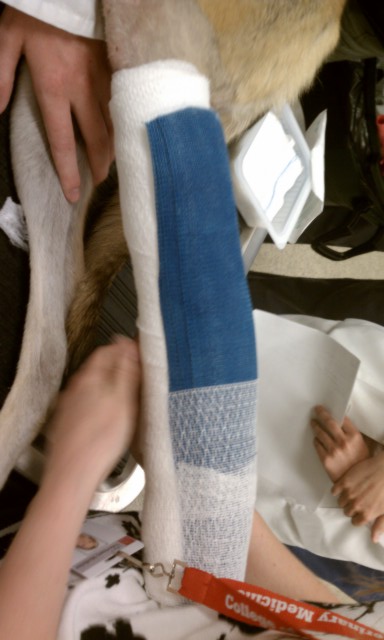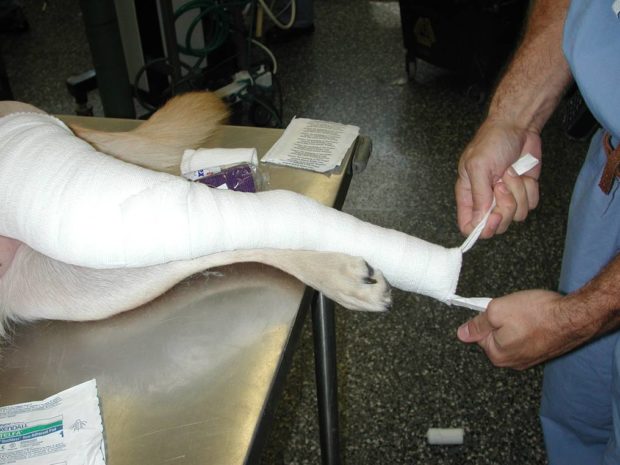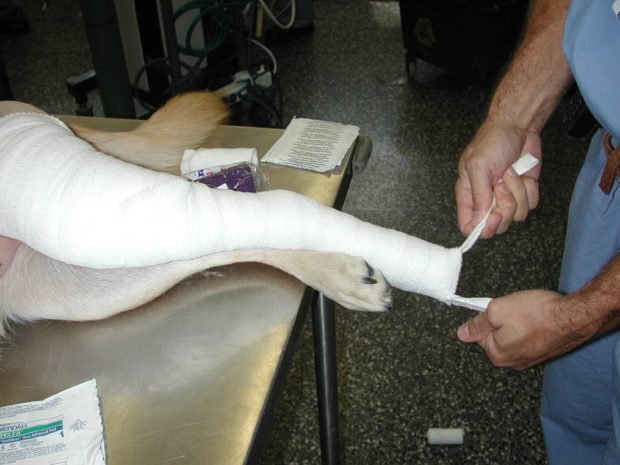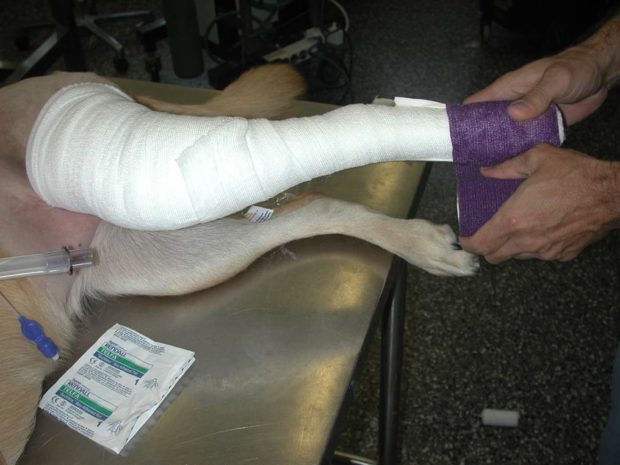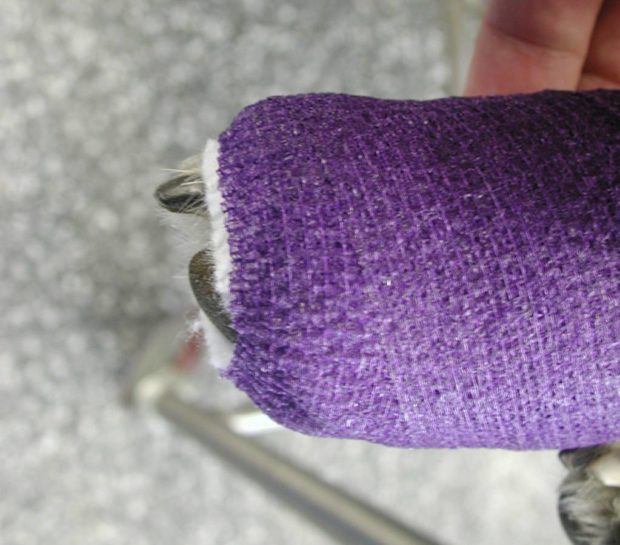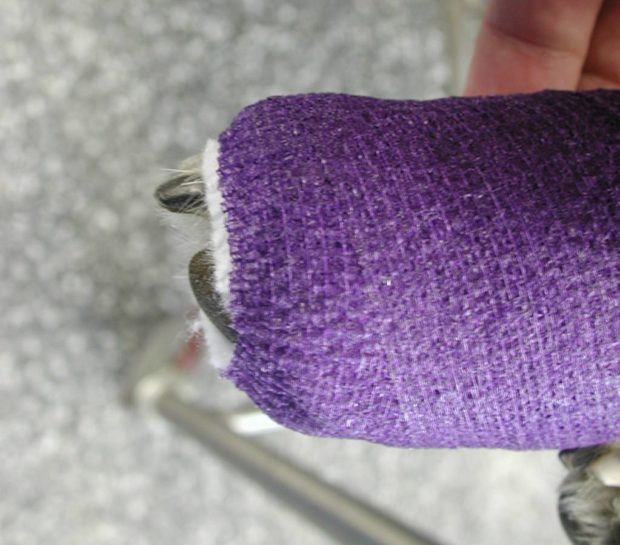After the excellent responses to Dr. Lauren Pugliese’s earlier article on emergency trauma administration for canines, she had quite a few readers contact her for followup data. Probably the most frequent questions she was requested was find out how to apply a long term bandage as soon as bleeding has been managed. She wrote a superb followup put up to handle these questions. Right here is Lauren’s article.
– Greg
Bandages are manufactured from three layers. First, there may be the dressing for the wound. The following layer offers padding and help (there are two parts to this layer), after which there may be the outer layer which holds all of it collectively.
Here’s a listing of mandatory provides:
Making use of the bandage:
1. Place your canine on his facet with the injured leg up
2. Cowl the wound with a non-adherent dressing similar to a Telfa or Adaptic pad.
3. Make “stirrups” utilizing tape. Rip two items of porous tape which might be about 12” lengthy. Place one piece of tape on the facet of the foot beginning on the ankle and lengthening previous the toes. Put the opposite piece of tape on the opposite facet of the foot in the identical manner. It’s useful to stay the ends of the tape which might be previous the toes to a tongue depressor as a substitute of getting them follow the whole lot else.
4. With the solid padding, begin on the degree of the toes. The skin toes are shorter than the center two toes. Place the padding on the degree of the shorter outer toe.
5. Roll the bandage materials twice across the foot. You’ll be able to pull as tightly as you want to as a result of this materials normally will rip simply. This secures the bandage to the foot.
6. Now, on the the third roll round, you’re going to transfer up so there may be 50% overlap of the bandage materials, nonetheless protecting it as cosy as you may.
7. With every successive loop round, hold transferring up the limb.
8. Whenever you run out of bandage padding materials, simply begin once more the place the final piece ended.
9. Whenever you get to the highest of the limb the place you need your bandage, begin going again down, at all times overlapping by 50%.
10. You will have 3-4 layers of padding and the limb will look extra like a uniform tube now.
11. The following step is the cling gauze. This may be placed on too tightly. You need to begin once more on the toes and go twice round to anchor it. It is best to pull exhausting sufficient to make a small dent within the padding of some millimeters.
12. As soon as anchored, begin transferring up the limb with 50% overlap. You will have 1-2 layers of cling gauze.
13. If you happen to want a splint, add it right here. Lie the splint alongside the skin (lateral) side of the limb and safe it with one other layer of cling gauze.
14. Separate the tape ends that reach on the backside of the bandage and switch every bit 180 levels so the sticky facet of the tape faces the bandage.
15. Lay the tape up alongside the bandage once more. Repeat for the second piece of tape. Now the bandage is taped to the leg with a loop of tape that may assist to forestall slipping downwards of the bandage.
16. Unroll the Vetwrap and re-roll it. This makes the stickiness of the self-adhesive looser so it’s simpler to use.
17. Beginning on the toes, wrap 1-2 layers of vet wrap over the bandage to offer a water-resistant, self-adherent layer that may maintain all the opposite layers in place.
18. It is best to be capable to see the 2 center toes. Monitor these for any separation that signifies swelling.
19. Cowl the bandage with a plastic bag or protecting cowl to maintain it dry if you are outdoors in your approach to the veterinarian’s workplace.
Because of Dr. Lauren for contributing the superb article!



